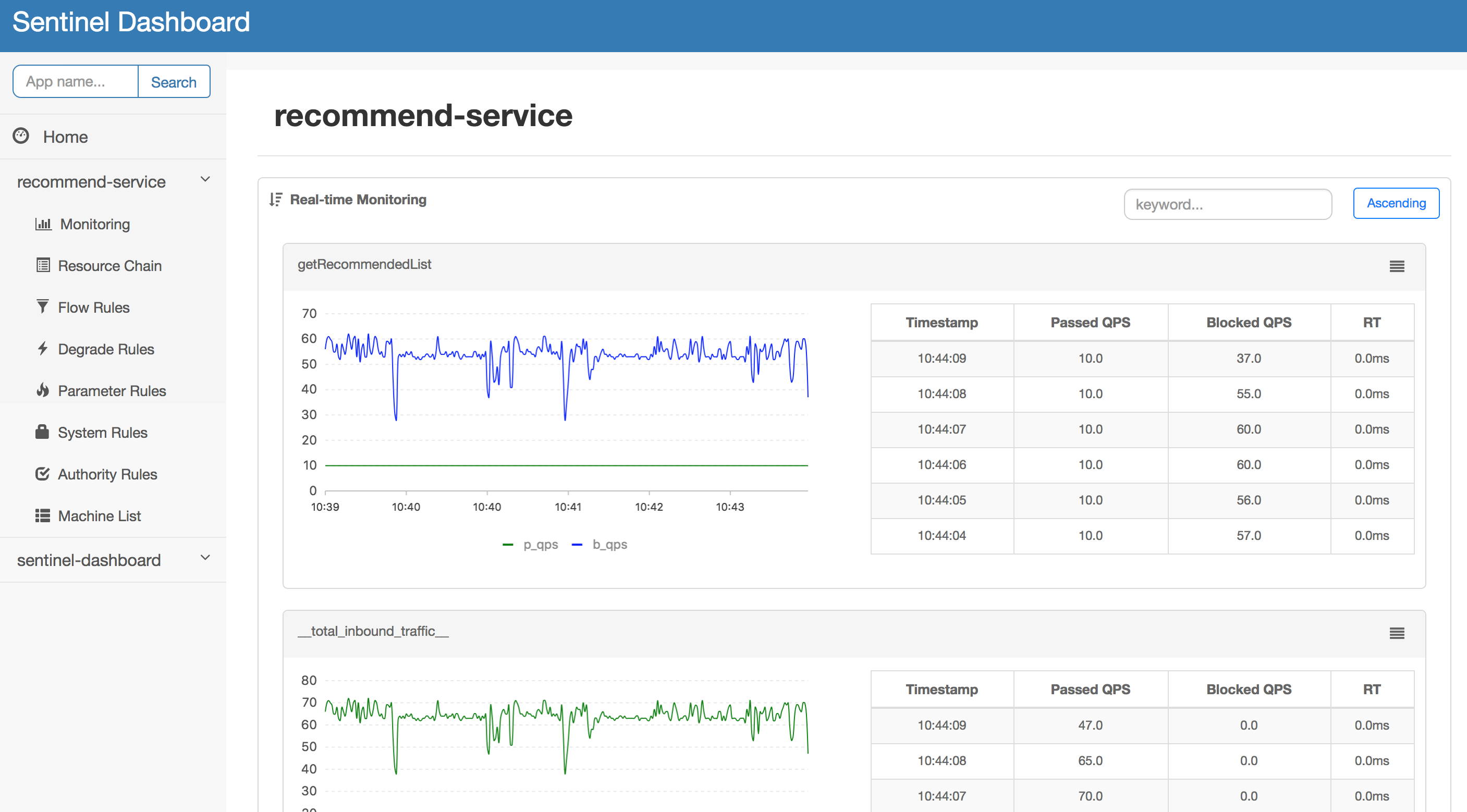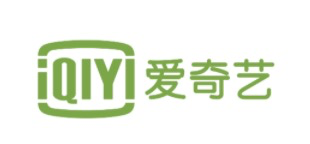 Sentinel
Sentinel
A powerful flow control component enabling reliability, resilience and monitoring for microservices. (面向云原生微服务的高可用流控防护组件)
Top Related Projects
Zipkin is a distributed tracing system
Resilience4j is a fault tolerance library designed for Java8 and functional programming
Hystrix is a latency and fault tolerance library designed to isolate points of access to remote systems, services and 3rd party libraries, stop cascading failure and enable resilience in complex distributed systems where failure is inevitable.
APM, Application Performance Monitoring System
Connect, secure, control, and observe services.
Quick Overview
Sentinel is a powerful flow control component enabling reliability, resilience, and fault tolerance for microservices. It offers various features including flow control, circuit breaking, and system adaptive protection, helping to ensure the stability of microservices and distributed systems.
Pros
- Comprehensive protection: Offers flow control, circuit breaking, and system adaptive protection
- High flexibility: Supports various rule configurations and can be easily integrated with different frameworks
- Real-time monitoring: Provides real-time metrics and monitoring capabilities
- Active community: Regularly updated with new features and improvements
Cons
- Learning curve: Requires time to understand and implement effectively
- Configuration complexity: Advanced features may require complex rule configurations
- Limited documentation in English: Some documentation and resources are primarily in Chinese
Code Examples
- Basic flow control:
public class FlowQpsDemo {
public static void main(String[] args) {
initFlowRules();
while (true) {
Entry entry = null;
try {
entry = SphU.entry("HelloWorld");
// Business logic here
System.out.println("hello world");
} catch (BlockException e) {
System.out.println("blocked!");
} finally {
if (entry != null) {
entry.exit();
}
}
}
}
private static void initFlowRules() {
List<FlowRule> rules = new ArrayList<>();
FlowRule rule = new FlowRule();
rule.setResource("HelloWorld");
rule.setGrade(RuleConstant.FLOW_GRADE_QPS);
rule.setCount(20);
rules.add(rule);
FlowRuleManager.loadRules(rules);
}
}
- Circuit breaking:
public class CircuitBreakerDemo {
private static final String KEY = "some_method";
public static void main(String[] args) throws Exception {
initDegradeRule();
for (int i = 0; i < 10; i++) {
Entry entry = null;
try {
entry = SphU.entry(KEY);
// Simulate slow invocations
Thread.sleep(100);
} catch (BlockException ex) {
System.out.println("Blocked!");
} finally {
if (entry != null) {
entry.exit();
}
}
}
}
private static void initDegradeRule() {
List<DegradeRule> rules = new ArrayList<>();
DegradeRule rule = new DegradeRule(KEY)
.setGrade(CircuitBreakerStrategy.SLOW_REQUEST_RATIO.getType())
.setCount(50)
.setTimeWindow(10)
.setSlowRatioThreshold(0.5)
.setMinRequestAmount(10)
.setStatIntervalMs(1000);
rules.add(rule);
DegradeRuleManager.loadRules(rules);
}
}
- System adaptive protection:
public class SystemAdaptiveDemo {
public static void main(String[] args) {
initSystemRule();
while (true) {
Entry entry = null;
try {
entry = SphU.entry("SystemAdaptive");
// Business logic here
System.out.println("Passed");
} catch (BlockException e) {
System.out.println("Blocked");
} finally {
if (entry != null) {
entry.exit();
}
}
}
}
private static void initSystemRule() {
List<SystemRule> rules = new ArrayList<>();
SystemRule rule = new SystemRule();
rule.setHighestSystemLoad(3.0);
rule.setAvgRt(10);
rule.setQps(20);
rules.add(rule);
SystemRuleManager.loadRules(rules);
}
}
Getting Started
- Add Sentinel dependency to your project:
<dependency>
Competitor Comparisons
Zipkin is a distributed tracing system
Pros of Zipkin
- More mature and widely adopted distributed tracing system
- Supports multiple languages and frameworks out-of-the-box
- Rich ecosystem with various integrations and plugins
Cons of Zipkin
- Primarily focused on distributed tracing, lacking comprehensive flow control features
- May require additional tools for complete observability and monitoring
Code Comparison
Zipkin (Java):
Span span = tracer.newTrace().name("encode").start();
try {
doSomethingExpensive();
} finally {
span.finish();
}
Sentinel (Java):
try (Entry entry = SphU.entry("resourceName")) {
// Protected business logic
} catch (BlockException ex) {
// Handle rejected request
}
Key Differences
- Zipkin is primarily a distributed tracing system, while Sentinel focuses on flow control and circuit breaking
- Zipkin provides detailed insights into request flows across microservices, whereas Sentinel offers real-time protection against system overload
- Sentinel includes features like adaptive flow control and circuit breaking, which are not native to Zipkin
- Zipkin is better suited for debugging and performance analysis, while Sentinel excels in maintaining system stability and preventing cascading failures
Use Cases
- Use Zipkin for end-to-end tracing and performance analysis in distributed systems
- Choose Sentinel for implementing resilience patterns and protecting your system from overload
Resilience4j is a fault tolerance library designed for Java8 and functional programming
Pros of Resilience4j
- Lightweight and modular design, allowing for easy integration and customization
- Extensive documentation and active community support
- Native support for reactive programming with Project Reactor and RxJava
Cons of Resilience4j
- Steeper learning curve for developers new to functional programming concepts
- Less comprehensive monitoring and dashboard features out-of-the-box
- Limited support for distributed systems compared to Sentinel
Code Comparison
Resilience4j:
CircuitBreaker circuitBreaker = CircuitBreaker.ofDefaults("backendService");
Supplier<String> decoratedSupplier = CircuitBreaker
.decorateSupplier(circuitBreaker, () -> "Hello");
String result = Try.ofSupplier(decoratedSupplier)
.recover(throwable -> "Hello from Recovery").get();
Sentinel:
try (Entry entry = SphU.entry("resourceName")) {
// Business logic here
} catch (BlockException ex) {
// Handle rejected request
}
Both libraries provide circuit breaking functionality, but Resilience4j uses a more functional approach with decorators, while Sentinel employs a more traditional try-catch block structure. Resilience4j's code is more concise but may be less intuitive for developers accustomed to imperative programming styles.
Hystrix is a latency and fault tolerance library designed to isolate points of access to remote systems, services and 3rd party libraries, stop cascading failure and enable resilience in complex distributed systems where failure is inevitable.
Pros of Hystrix
- Mature and battle-tested in large-scale production environments
- Extensive documentation and community support
- Built-in dashboard for real-time monitoring and visualization
Cons of Hystrix
- No longer actively maintained (in maintenance mode)
- Limited support for modern reactive programming models
- Higher memory footprint and performance overhead
Code Comparison
Hystrix:
@HystrixCommand(fallbackMethod = "fallback")
public String doSomething() {
// Your code here
}
Sentinel:
@SentinelResource(fallback = "fallback")
public String doSomething() {
// Your code here
}
Both Hystrix and Sentinel provide circuit breaking and fault tolerance capabilities for distributed systems. Hystrix, developed by Netflix, has been widely adopted and offers robust features. However, it's now in maintenance mode, which may concern users looking for active development.
Sentinel, maintained by Alibaba, is a more recent project that addresses some of Hystrix's limitations. It offers better performance, lower overhead, and support for modern programming paradigms. Sentinel also provides more flexible rule configurations and a wider range of supported scenarios.
While Hystrix has a steeper learning curve, its extensive documentation and community support can be beneficial. Sentinel, on the other hand, offers a simpler API and easier integration, making it more accessible for new projects.
Ultimately, the choice between Hystrix and Sentinel depends on specific project requirements, existing infrastructure, and long-term maintenance considerations.
APM, Application Performance Monitoring System
Pros of SkyWalking
- More comprehensive observability solution, including distributed tracing, metrics, and logging
- Supports multiple programming languages and frameworks out-of-the-box
- Provides a powerful UI for visualizing and analyzing application performance
Cons of SkyWalking
- Steeper learning curve due to its broader feature set
- Higher resource consumption compared to Sentinel's lightweight design
- May require more configuration and setup for full functionality
Code Comparison
SkyWalking (Java agent configuration):
-javaagent:/path/to/skywalking-agent.jar
-Dskywalking.agent.service_name=your-service-name
-Dskywalking.collector.backend_service=localhost:11800
Sentinel (Java usage):
SphU.entry("resourceName");
try {
// Your protected business logic here
} finally {
SphU.exit();
}
While both projects focus on improving application reliability and performance, they serve different primary purposes. Sentinel is primarily a flow control and circuit breaking framework, whereas SkyWalking is a more comprehensive application performance monitoring (APM) and observability platform. Sentinel is generally easier to integrate for specific flow control needs, while SkyWalking provides a broader range of monitoring capabilities at the cost of increased complexity.
Connect, secure, control, and observe services.
Pros of Istio
- Comprehensive service mesh solution with advanced traffic management, security, and observability features
- Strong community support and backing from major tech companies
- Seamless integration with Kubernetes and cloud-native ecosystems
Cons of Istio
- Steeper learning curve and more complex setup compared to Sentinel
- Higher resource overhead, especially for smaller deployments
- Can introduce latency in certain scenarios due to its sidecar proxy model
Code Comparison
Sentinel (Java):
@SentinelResource(value = "HelloWorld", blockHandler = "exceptionHandler")
public String helloWorld() {
// Your code here
}
Istio (YAML):
apiVersion: networking.istio.io/v1alpha3
kind: VirtualService
metadata:
name: my-service
spec:
hosts:
- my-service
http:
- route:
- destination:
host: my-service
Summary
Istio offers a more comprehensive service mesh solution with advanced features and strong community support, making it suitable for complex, large-scale deployments. However, it comes with a steeper learning curve and higher resource requirements. Sentinel, on the other hand, provides a lightweight and easy-to-use solution for flow control and circuit breaking, making it more suitable for simpler use cases or resource-constrained environments. The choice between the two depends on the specific requirements and scale of your project.
Convert  designs to code with AI
designs to code with AI

Introducing Visual Copilot: A new AI model to turn Figma designs to high quality code using your components.
Try Visual CopilotREADME
Sentinel: The Sentinel of Your Microservices

Introduction
As distributed systems become increasingly popular, the reliability between services is becoming more important than ever before. Sentinel takes "flow" as breakthrough point, and works on multiple fields including flow control, traffic shaping, concurrency limiting, circuit breaking and system adaptive overload protection, to guarantee reliability and resilience for microservices.
Sentinel has the following features:
- Rich applicable scenarios: Sentinel has been wildly used in Alibaba, and has covered almost all the core-scenarios in Double-11 (11.11) Shopping Festivals in the past 10 years, such as âSecond Killâ which needs to limit burst flow traffic to meet the system capacity, message peak clipping and valley fills, circuit breaking for unreliable downstream services, cluster flow control, etc.
- Real-time monitoring: Sentinel also provides real-time monitoring ability. You can see the runtime information of a single machine in real-time, and the aggregated runtime info of a cluster with less than 500 nodes.
- Widespread open-source ecosystem: Sentinel provides out-of-box integrations with commonly-used frameworks and libraries such as Spring Cloud, gRPC, Apache Dubbo and Quarkus. You can easily use Sentinel by simply add the adapter dependency to your services.
- Polyglot support: Sentinel has provided native support for Java, Go, C++ and Rust.
- Various SPI extensions: Sentinel provides easy-to-use SPI extension interfaces that allow you to quickly customize your logic, for example, custom rule management, adapting data sources, and so on.
Features overview:

The community is also working on the specification of traffic governance and fault-tolerance. Please refer to OpenSergo for details.
Documentation
See the Sentinel Website for the official website of Sentinel.
See the ä¸æææ¡£ for document in Chinese.
See the Wiki for full documentation, examples, blog posts, operational details and other information.
Sentinel provides integration modules for various open-source frameworks (e.g. Spring Cloud, Apache Dubbo, gRPC, Quarkus, Spring WebFlux, Reactor) and service mesh. You can refer to the document for more information.
If you are using Sentinel, please leave a comment here to tell us your scenario to make Sentinel better. It's also encouraged to add the link of your blog post, tutorial, demo or customized components to Awesome Sentinel.
Ecosystem Landscape

Quick Start
Below is a simple demo that guides new users to use Sentinel in just 3 steps. It also shows how to monitor this demo using the dashboard.
1. Add Dependency
Note: Sentinel requires JDK 1.8 or later.
If you're using Maven, just add the following dependency in pom.xml.
<!-- replace here with the latest version -->
<dependency>
<groupId>com.alibaba.csp</groupId>
<artifactId>sentinel-core</artifactId>
<version>1.8.8</version>
</dependency>
If not, you can download JAR in Maven Center Repository.
2. Define Resource
Wrap your code snippet via Sentinel API: SphU.entry(resourceName).
In below example, it is System.out.println("hello world");:
try (Entry entry = SphU.entry("HelloWorld")) {
// Your business logic here.
System.out.println("hello world");
} catch (BlockException e) {
// Handle rejected request.
e.printStackTrace();
}
// try-with-resources auto exit
So far the code modification is done. We've also provided annotation support module to define resource easier.
3. Define Rules
If we want to limit the access times of the resource, we can set rules to the resource. The following code defines a rule that limits access to the resource to 20 times per second at the maximum.
List<FlowRule> rules = new ArrayList<>();
FlowRule rule = new FlowRule();
rule.setResource("HelloWorld");
// set limit qps to 20
rule.setCount(20);
rule.setGrade(RuleConstant.FLOW_GRADE_QPS);
rules.add(rule);
FlowRuleManager.loadRules(rules);
For more information, please refer to How To Use.
4. Check the Result
After running the demo for a while, you can see the following records in ~/logs/csp/${appName}-metrics.log.{date} (When using the default DateFileLogHandler).
|--timestamp-|------date time----|-resource-|p |block|s |e|rt |occupied
1529998904000|2018-06-26 15:41:44|HelloWorld|20|0 |20|0|0 |0
1529998905000|2018-06-26 15:41:45|HelloWorld|20|5579 |20|0|728 |0
1529998906000|2018-06-26 15:41:46|HelloWorld|20|15698|20|0|0 |0
1529998907000|2018-06-26 15:41:47|HelloWorld|20|19262|20|0|0 |0
1529998908000|2018-06-26 15:41:48|HelloWorld|20|19502|20|0|0 |0
1529998909000|2018-06-26 15:41:49|HelloWorld|20|18386|20|0|0 |0
p stands for incoming request, block for blocked by rules, s for success handled by Sentinel, e for exception count, rt for average response time (ms), occupied stands for occupiedPassQps since 1.5.0 which enable us booking more than 1 shot when entering.
This shows that the demo can print "hello world" 20 times per second.
More examples and information can be found in the How To Use section.
The working principles of Sentinel can be found in How it works section.
Samples can be found in the sentinel-demo module.
5. Start Dashboard
Note: Java 8 is required for building or running the dashboard.
Sentinel also provides a simple dashboard application, on which you can monitor the clients and configure the rules in real time.

For details please refer to Dashboard.
Trouble Shooting and Logs
Sentinel will generate logs for troubleshooting and real-time monitoring. All the information can be found in logs.
Bugs and Feedback
For bug report, questions and discussions please submit GitHub Issues.
Contact us via Gitter or Email.
Contributing
Contributions are always welcomed! Please refer to CONTRIBUTING for detailed guidelines.
You can start with the issues labeled with good first issue.
Enterprise Service
If you need Sentinel enterprise service support (Sentinel ä¼ä¸ç), or purchase cloud product services, you can join the discussion by the DingTalk group (34754806). It can also be directly activated and used through the microservice engine (MSE å¾®æå¡å¼æ) provided by Alibaba Cloud.
Credits
Thanks Guava, which provides some inspiration on rate limiting.
And thanks for all contributors of Sentinel!
Who is using
These are only part of the companies using Sentinel, for reference only. If you are using Sentinel, please add your company here to tell us your scenario to make Sentinel better :)













Top Related Projects
Zipkin is a distributed tracing system
Resilience4j is a fault tolerance library designed for Java8 and functional programming
Hystrix is a latency and fault tolerance library designed to isolate points of access to remote systems, services and 3rd party libraries, stop cascading failure and enable resilience in complex distributed systems where failure is inevitable.
APM, Application Performance Monitoring System
Connect, secure, control, and observe services.
Convert  designs to code with AI
designs to code with AI

Introducing Visual Copilot: A new AI model to turn Figma designs to high quality code using your components.
Try Visual Copilot

